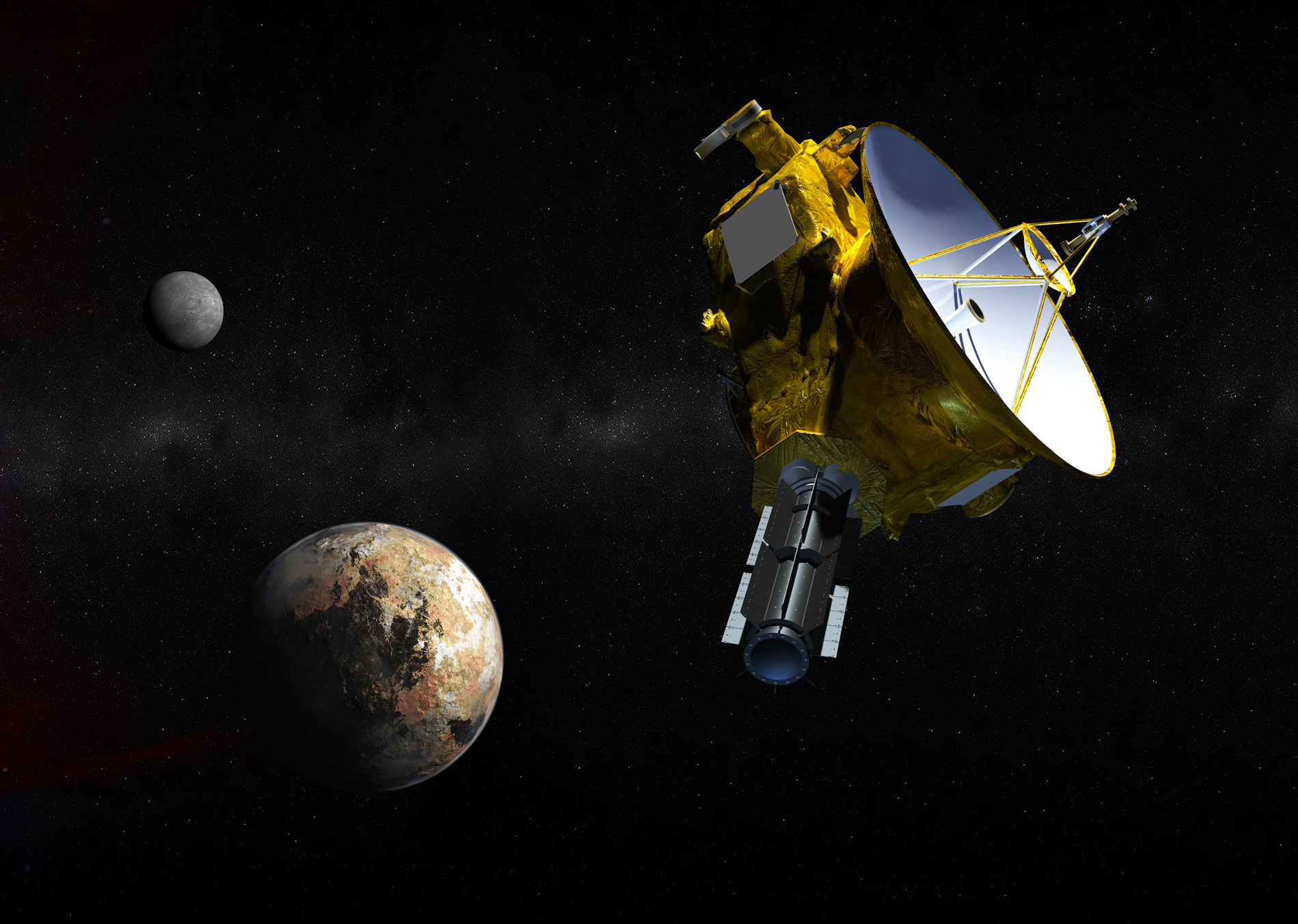Watch the Pluto Flyby: How to See NASA Make History Online

LAUREL, Md. — Hold on to your butts. On Tuesday (July 14), NASA will give Pluto its first close-up since the dwarf planet's discovery 85 years ago, and you can follow it all online. Be warned, however: You'll have to rise early and stay up late.
At 7:49 a.m. EDT (1149 GMT) on Tuesday, NASA's New Horizons spacecraft will fly by Pluto in what is arguably the planetary event of the year, if not the decade. For the first time since NASA's Voyager mission in 1989, a spacecraft will fly by an unexplored planet. "It sounds like it's science fiction, but it's not," New Horizons' principal investigator Alan Stern told reporters here today (July 13). "Tomorrow morning, an American spacecraft will fly by the planet Pluto and make history."
And Stern is right: It's going to be epic, and you won't want to miss it. You can watch a New Horizons Pluto flyby webcast beginning at 7:30 a.m. EDT (1130 GMT), courtesy of NASA TV.
That webcast will run through 8 a.m. EST (1200 GMT) and mark the first celebration of the day for NASA, when New Horizons will have flown within 7,750 miles (12,500 kilometers) of Pluto and zoomed off on its way. Then, from 8 a.m. to 9 a.m. EDT (1200 to 1300 GMT), NASA will host a media briefing to unveil a new Pluto image and update the press and public.
At the same time, the folks at the American Museum of Natural History in New York City will . oblige with their own affair. From 7 a.m. to 9 a.m. EDT (1100-1300 GMT), the museum will host "Breakfast at Pluto" a program to celebrate New Horizons' epic flyby. You can follow the "Breakfast at Pluto" in a live Google Hangout, as well as on Space.com here.
AMNH's "Breakfast at Pluto" will be hosted by astrophysicist Neil deGrasse Tyson, director of the museum's Hayden Planetarium, along with curator Denton Ebel and astrovisualization director Carter Emmart. The webcase will feature a live commentary feed from the New Horizons mission control center here at the Johns Hopkins University Applied Physics Laboratory.
By 9 a.m. EDT, New Horizons will be busy observing the night side of Pluto, a process that will take hours as the spacecraft — streaking away at 31,000 mph (49,889 km/h) — attempts to spy the thin atmosphere of Pluto and seek out any traces of an atmosphere on its largest moon, Charon.
Breaking space news, the latest updates on rocket launches, skywatching events and more!
At 4:20 p.m. EDT (2020 GMT), New Horizons is expected to call Earth, sending a "phone home" signal to show that it has completed the closest phase of the flyby. It will take about 4.5 hours for the signal to traverse the nearly 3 billion miles (4.7 billion km) between Pluto and Earth.
At 8:30 p.m. EDT (0030 July 15 GMT), NASA will stream another webcast that runs through 9:15 p.m. EDT (0115 GMT), during which time the space agency expects to hear the "phone home" signal.
Finally, you can track New Horizons throughout the entire day with NASA's "Eyes on Pluto" app, which will give users a real-time view of where the probe is during its Pluto encounter, as well as what its instruments are observing at any given time. You can download the Eyes on Pluto app here.
So when it comes to tracking New Horizons' Pluto flyby, you have options. Whichever method you use, it promises to be an amazing experience.
Over the last 24 hours, New Horizons has already revealed new details about Pluto, including the dwarf planet's size, its methane-nitrogen polar ice cap and more. Recent photos over the last few days and weeks have revealed a strange heart-shaped feature on Pluto, and what appear to be chasms and craters on Charon.
"Pluto has already surprised us in the images and data taken so far," John Grunsfeld, NASA's associate administrator for science missions, told reporters today. "And the best is yet to come."
"This is real exploration," Grunsfeld continued. "For New Horizons, I say, 'May the Force be with you.'"
Visit Space.com Tuesday for the latest updates and images from the Pluto flyby by New Horizons.
Email Tariq Malik at tmalik@space.com or follow him @tariqjmalik and Google+. Follow us @Spacedotcom, Facebook and Google+. Original article on Space.com.

Tariq is the award-winning Editor-in-Chief of Space.com and joined the team in 2001. He covers human spaceflight, as well as skywatching and entertainment. He became Space.com's Editor-in-Chief in 2019. Before joining Space.com, Tariq was a staff reporter for The Los Angeles Times covering education and city beats in La Habra, Fullerton and Huntington Beach. He's a recipient of the 2022 Harry Kolcum Award for excellence in space reporting and the 2025 Space Pioneer Award from the National Space Society. He is an Eagle Scout and Space Camp alum with journalism degrees from the USC and NYU. You can find Tariq at Space.com and as the co-host to the This Week In Space podcast on the TWiT network. To see his latest project, you can follow Tariq on Twitter @tariqjmalik.
